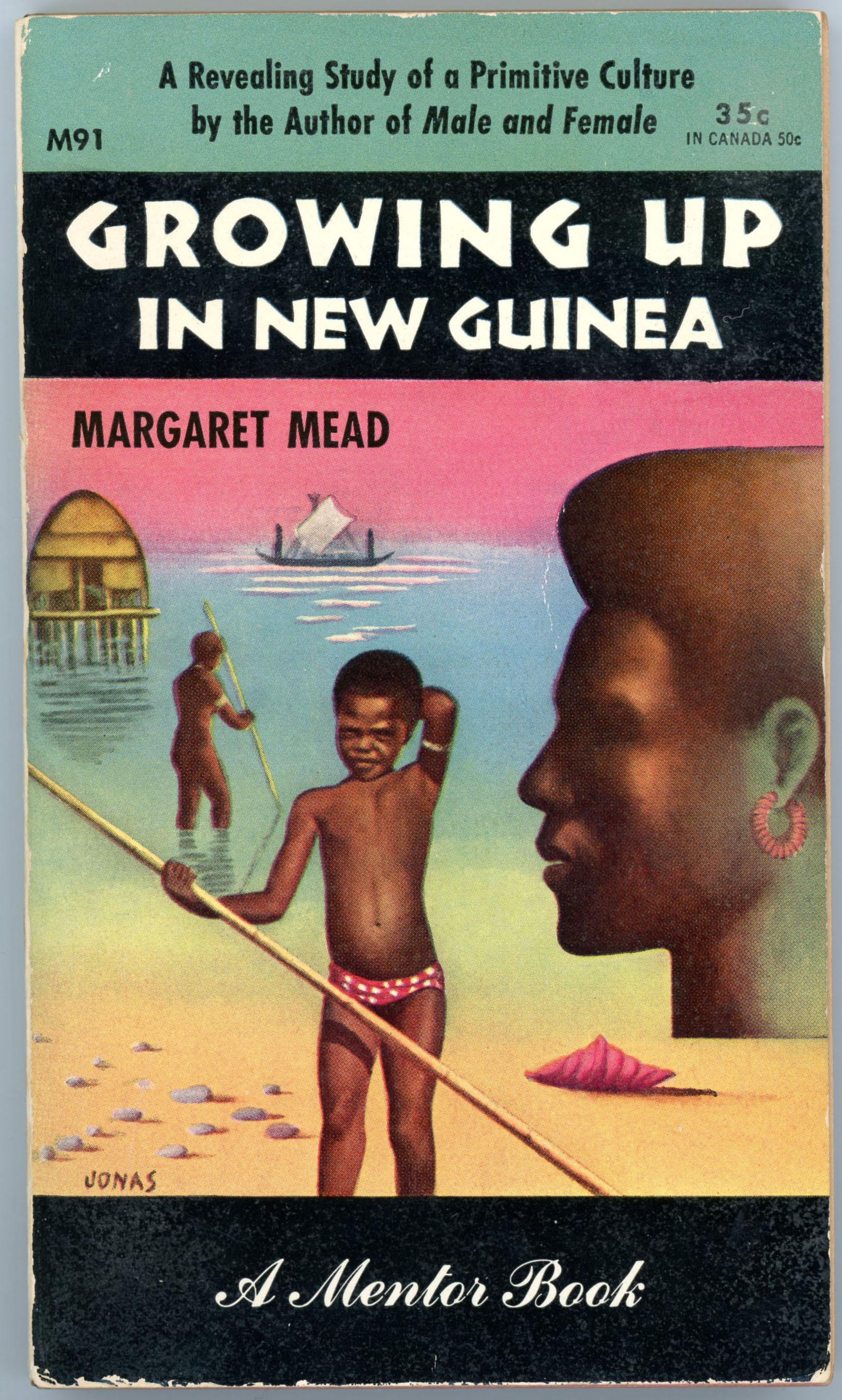When I first discovered this 1948 Signet Books edition of William Faulkner’s The Old Man, I assumed that the very phrase – “the old man” – referred to the novel’s protagonist. Well, it does, but only in a symbolic sense, for the title actually refers to the Mississippi River, a “character” inanimate yet very much alive. The only work of Faulkner’s that I’ve read is The Reivers, which was an assigned reading for freshman English in Easton College, as a novel reflecting an ideological orientation focusing (and this was decades ago) on the concept of the “anti-hero”. I was highly unimpressed by the story then (really, I was, even accounting for age) and remain so, now.
As you can see from the very title of this post (!), this Signet Books cover art is by “Jonas” – that’s Robert Jonas – who created the cover art for many a monograph in the Mentor Books series. Unlike Jonas’ covers for those books, which are typified by bright, bold, contrasting colors, and geometrically-situated patterns, symbols, and objects, there’s something about this painting that’s vastly different: It’s very reminiscent of WPA (Works Progress Administration) murals from the late 1930s through early 1940s in post offices.
______________________________
The novel, starring Jeanne Tripplehorn and Arliss Howard, was adapted for film in 1997. Here’s the trailer, from Video Detective’s YouTube channel…
…and, here’s the full movie, at Chzz77 Dacan’s YouTube channel, uploaded November 7, 2023:
Take a listen: At thepostarchive, William Faulkner reads from his novels “A Fable” and “The Old Man”…
______________________________
This 1948 edition of The Old Man features a biographical blurb about the author on the rear cover, accompanied by his photograph. In this case, Faulkner is seen in front of his home (I guess it’s his home?) in Oxford, Mississippi, in a photograph by Henri Cartier-Bresson.
Here’s the image as it appears on the rear-cover, published in halftone format…
…while this version, obviously scanned from a photographic print, was found at Pinterest.
Evidently, the above image was one of a sequence of photos (how many – two? – three? – more? – I’ve no idea) of Faulkner at Oxford. This is revealed by the photo below, also taken by Cartier-Bresson, showing Faulkner in a vertical format. For this image, the author seems to have stepped back a foot or two – or has Cartier-Bresson stepped forward a little bit? – from where he was standing in the previous photo. The picture, from artsy.net, is described as “Gelatin silver print, printed later – 17 3/5 × 11 7/10 in | 44.8 × 29.8 cm”.
Clever, how Cartier-Bresson got Faulkner’s dogs (I guess they’re his dogs?) in the picture.
Some Other Things to Read…
The Old Man (Novel)…
…at Good Reads
…at Book Marks
…at All Things Crime (“Honor Among Thieves in William Faulkner’s “The Old Man”)
…at Jaysanalysis (“Esoteric Symbolism and Allegory in Faulkner’s Old Man”)
…at Wikipedia (an interwoven story in “If I Forget Thee, Oh Jerusalem”)
The Old Man (1997 Movie)…
…at All Movie
…at Variety
Henri Cartier-Bresson…
…at Brittanica.com
…at MoMA
…at Magnum Photos

























